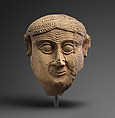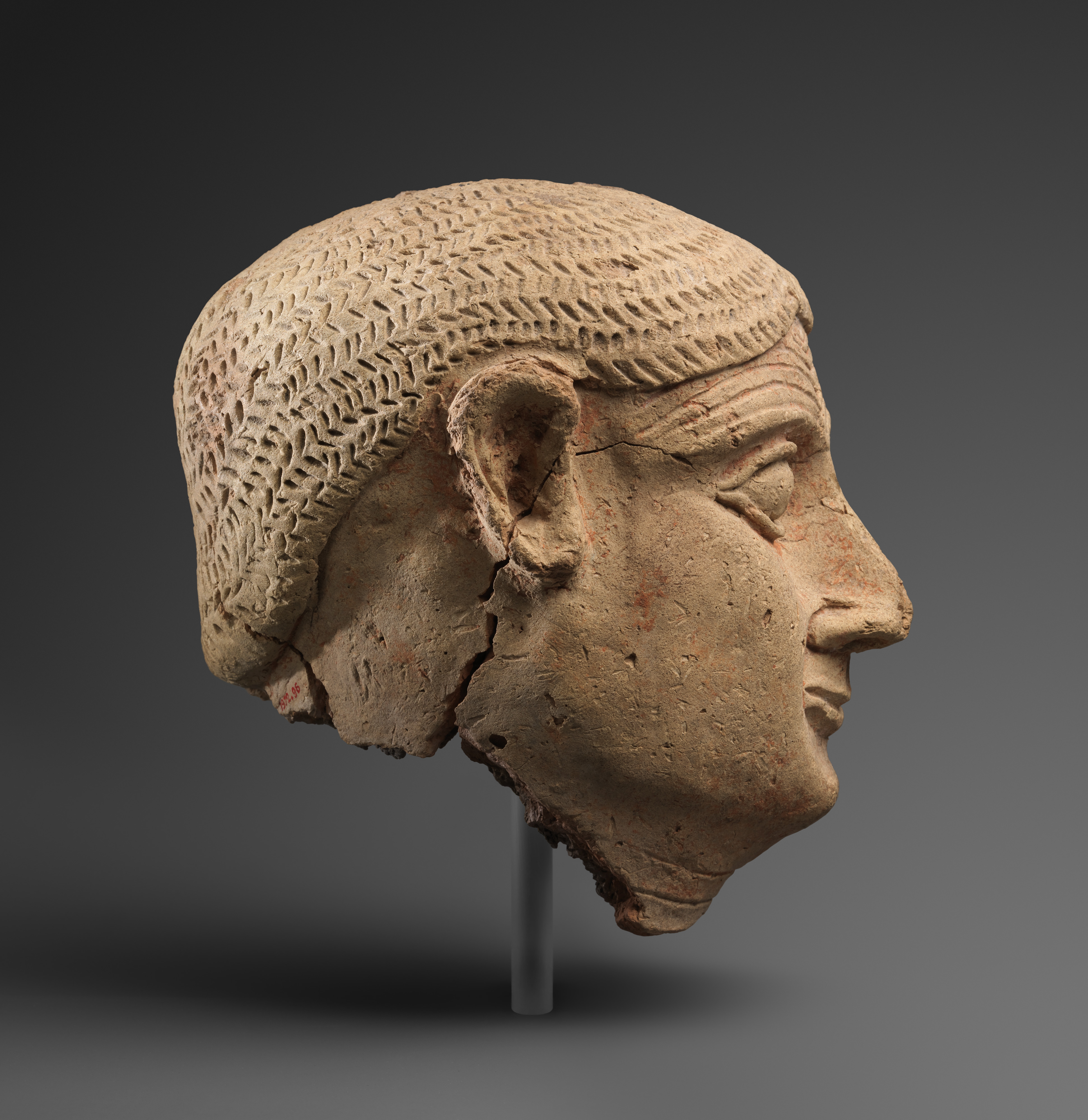Head of a male
Not on view
This head, broken at the neck, depicts a beardless male figure. The male is in an attentive pose: his forehead is furrowed, his eyes are large and heavily rimmed, his nostrils appear to be flared, and his ears are raised and protrude from the sides of his head. Thin lips are shown in a slight smile. A carved herringbone pattern gives texture to his cap-like hairdo. Unusually, this male is depicted beardless, and on his neck are two horizontal grooves – perhaps to represent some kind of collar or jewelry. Despite the care given to the carving of this head, the clay itself is of a rather poor quality, with numerous inclusions. The head was fired in antiquity and traces of red paint on his skin and black on his hair indicate that it was originally painted. There is a small cavity in the base of the head.
Several terracotta heads and busts are known from both ancient Iraq and Iran in the early second millennium B.C. It seems likely that many of these terracottas were originally part of a larger, perhaps composite, full body representation. Like this figure, they often have attentive expressions, and some are shown with clasped hands. Such expressions and postures call to mind the smaller stone worshiper figures of the Early Dynastic period. We know very little about votive figures in the early second millennium B.C., but there is evidence that various clay figures served as temple guardians.
Due to rights restrictions, this image cannot be enlarged, viewed at full screen, or downloaded.
This artwork is meant to be viewed from right to left. Scroll left to view more.



